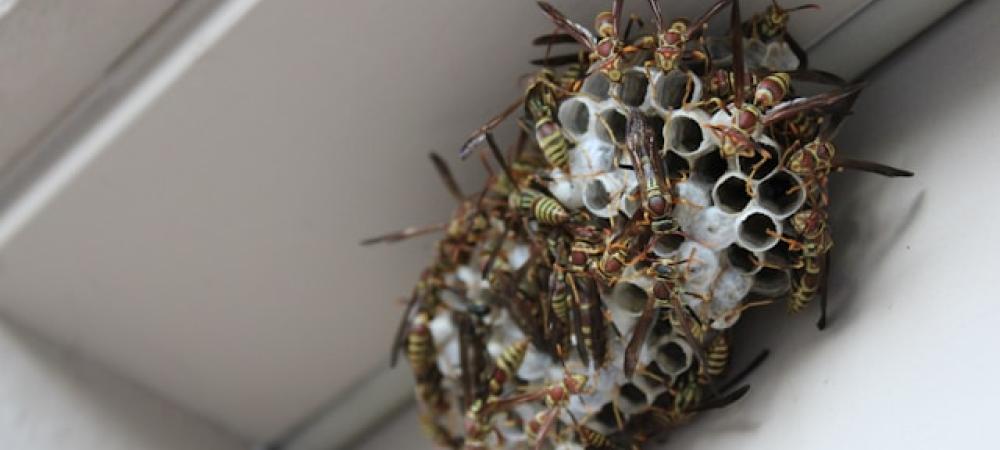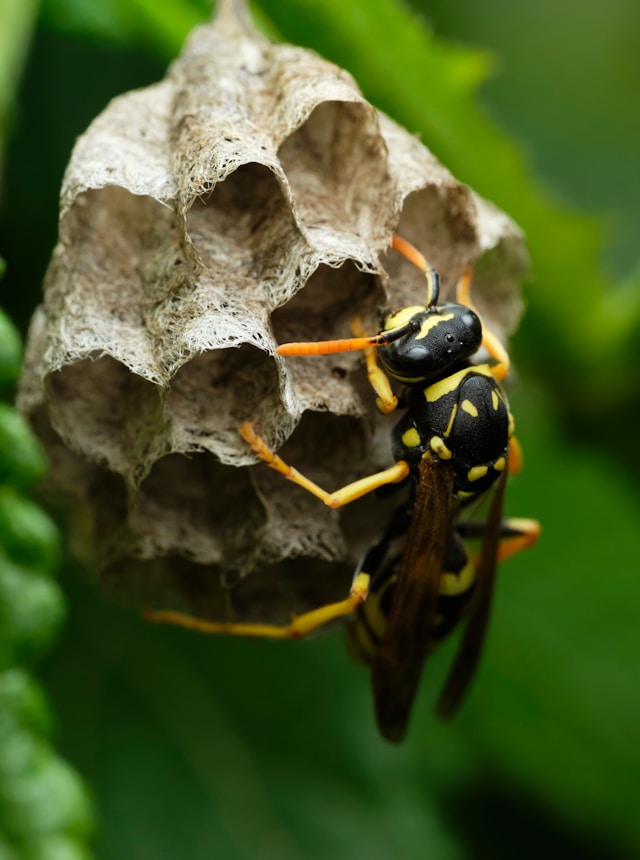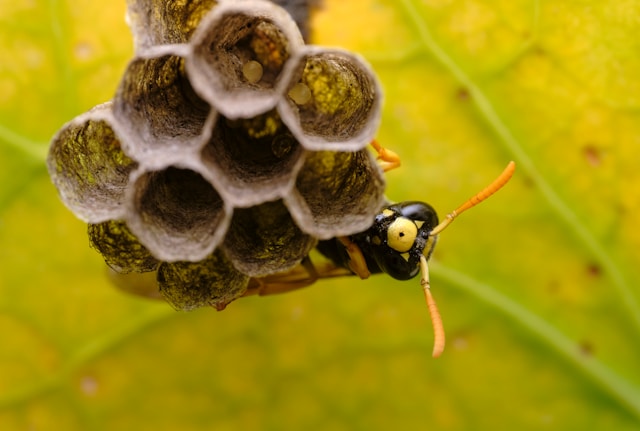What Should I Do if I Find a Wasp Nest in My Attic?

Finding a wasp nest in your attic might make your heart skip a beat, but we've got your back!
We cover everything from understanding the risks of an indoor wasp infestation to learning what steps to take. Keep reading to learn how to manage this situation confidently and safeguard your home and family.
Let's get down to business and take care of that wasp nest together.
Types of Wasps Northern Virginia and the DC Metro
Here are some of the pests you may find buzzing around in your DC or Northern Virginia attics. We've got quite a variety, each with its own quirks and habits.
European Paper Wasp (Polistes dominula):
European paper wasps are among the most common species in the DC metro and Northern Virginia region. They are typically around 1 inch long with distinctive yellow and black markings on their bodies.
These pests construct umbrella-shaped nests in sheltered areas using a unique papery material composed of wood fibers and saliva. While these wasps are typically non-aggressive, they will sting if threatened.
Eastern Yellowjacket (Vespula maculifrons):
Eastern yellowjackets are yellow and black social insects that live in colonies, with nests often located underground, in wall cavities, or near attics.
These wasps are highly aggressive and territorial, defending their nests at the first sign of trouble. Because of their prickly demeanor, you’re more likely to get stung by a yellowjacket than other wasps in the area.
Removing a yellowjacket nest isn’t easy, and we don’t recommend it. If you spot these guys buzzing around your property, contact us!
Bald-Faced Hornet (Dolichovespula maculata):
Bald-faced hornets are large, black insects with white or ivory markings on their faces and thoraxes. Despite their name, bald-faced hornets are actually a type of yellowjacket; the only true hornet species with a foothold in the United States is the European hornet – a large and dangerous pest with a powerful sting.
Similar to yellowjackets and paper wasps, bald-faced hornets are social insects. They live together in large, spherical nests in trees, shrubs, or buildings. These equally aggressive pests will defend their hive against anyone who draws their attention, potentially leaving you with a painful sting.
Cicada Killer Wasp (Sphecius speciosus):
While less common than other species, cicada killer wasps occasionally inhabit the DC metro and Northern Virginia area. They are large, solitary wasps with distinctive black and yellow coloration and an impressive size, reaching up to 2 inches in length.
Aptly named, cicada killer wasps hunt for cicadas to feed their young, packing the insects into their underground burrows. As the wasp’s eggs hatch, its larvae will feed on the cicada and begin to develop.
While they can be intimidating due to their size, cicada killer wasps are generally not aggressive towards humans and rarely sting unless provoked.
Signs of a Wasp Nest in Your Attic
Do you suspect some uninvited guests might be buzzing around your attic? Here are some signs to watch out for:

Visual Sightings: The most obvious sign of attic wasps is, well, seeing them. Watch for wasps flying in and out of your attic space, especially during the warmer months when they're most active.
Audible Buzzing: Listen closely. If you hear a buzzing sound coming from your attic, there's a good chance you've got some winged visitors up there. Wasps aren’t quiet insects; you may hear a faint hum while building or defending their nest.
*HUGE* Yellow Jacket Nest In Attic floor - Wasp Nest Removal ASMR
Presence of Nests: Depending on the species, you may see several different nests in your attic. Common ones include:
- Paper nests: Constructed from a papery material from wood fibers mixed with saliva, these nests often resemble inverted umbrellas or large footballs and are typically attached to surfaces like rafters, eaves, or attic corners.
- Mud nests: Mud daubers build nests out of mud resembling small tubes or clusters attached to walls or ceilings.
Nest Building Activity: If you notice wasps carrying small pieces of material into your attic or busily flying in and out of openings, it's a telltale sign that they're constructing a nest.
What Should I Do if I Find a Wasp Nest in My Attic?
Finding a wasp nest in your attic can be nerve-wracking, but don't worry! We've got you covered with some helpful tips to handle it like a pro.
Stay Calm
If you find or suspect there’s a wasp nest in your attic, remember to remain calm! While scary, panicking can make the situation worse and increase your chances of getting stung.
Instead, take a moment to assess the severity of the infestation. Determine the size and location of the nest, as well as any signs of visible wasp activity, like buzzing pests flitting around. This can help your pest control company determine the infestation’s severity once you call them!
Avoid getting too close to the nest or stirring up the wasps. Keep kids and pets away from the area, too, to avoid accidental run-ins.
Do Not Attempt Removal Yourself
It's essential to resist the urge to tackle nest removal yourself. DIY methods pose serious risks, increasing the likelihood of getting stung or worsening the wasp situation.
What’s the best course of action? Trust the professionals! Give us a call and explain the situation, providing key details about the size and location of the nest. Then, we’ll schedule an inspection to assess the infestation and figure out the next steps.
At Connor’s Pest Pros, we’re trained and equipped for the job. We have everything we need to safely handle the situation and minimize potential hazards that could impact your family.
Take Preventative Measures
As you wait for the professionals, we suggest taking some precautions to lower the chances of unwanted run-ins.
Start by sealing off any access points to the attic, like gaps or openings in the roof or walls. Close all interior doors leading to the attic, as well. This can help prevent more wasps from coming in or out, reducing the risk of additional encounters.
Wait for Professional Removal
When we arrive, please let us handle the removal process. Our team will use specialized equipment and techniques to safely eliminate the nest and minimize the risk of stings.
Monitor for Recurrence
After removing the nest, monitor your attic periodically for signs of wasp activity or new nests. Address any potential entry points or conducive conditions to prevent future infestations.
Trust the Experts at Connor’s Pest Pros
At Connor's Pest Pros, we get it – finding a wasp nest in your attic can be a real headache. That’s why we're here! Our seasoned crew knows how to tackle the problem and take the sting out of the situation.

Whether it's a tiny nest or a full-blown infestation, you can bet Connor's Pest Pros will handle it like champs. Don't let those pesky wasps ruin your day– let us handle them hassle-free! Contact us today!
